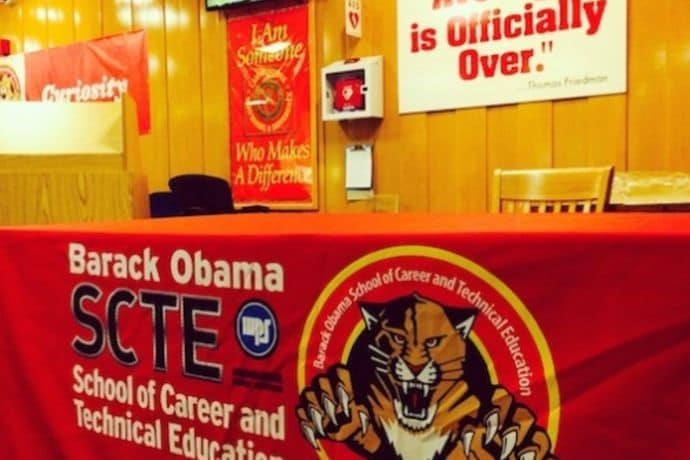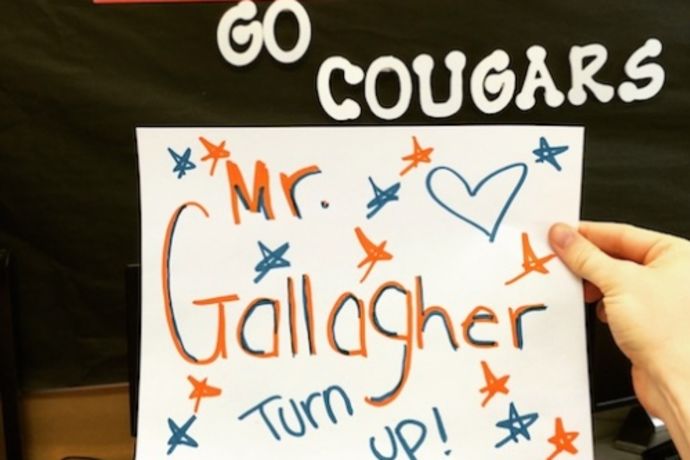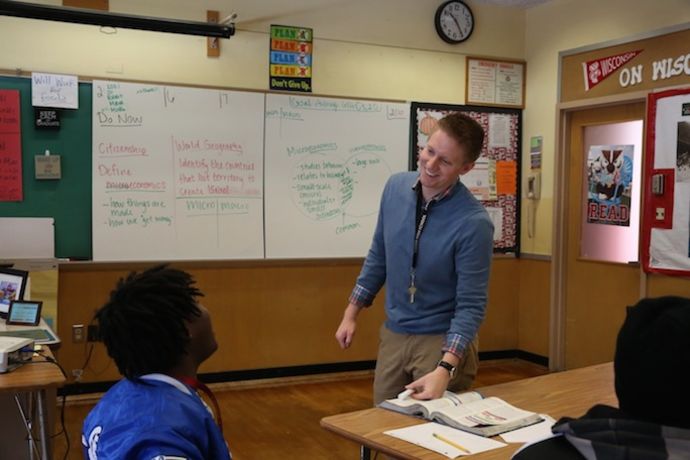Embracing Diverse Learners in Milwaukee is Yielding Results

July 8, 2015
I’ll never forget the day E.R., a student in my self-contained special education classroom at Barack Obama School of Career and Technical Education (BOSCTE) in Milwaukee, hugged me. Some of our previous interactions had admittedly been strained, but on that day in late January, E.R. showed his rarely seen grin.
The reason? The kid other students derisively called "Ninth Grade Forever" because of his perceived lack of potential had proved his naysayers wrong. E.R. was, in fact, moving on to the 10th grade, and it gave me goosebumps watching this student shed the many stigmas that had plagued him during high school.
When I first joined Teach For America, E.R. was the type of student I had hoped to serve. Too often, students in special education settings are written off. According to the Department of Education, 46 states face a teaching shortage in special education subjects. These students deserve educators and schools built to understand their needs, hold them to high expectations, and ultimately be partners in their successes.
As a teacher in my school’s comprehensive behavior unit, I work every day with students who have emotional or behavioral disabilities. It is up to me to learn the differences of my students and cater to them, ensuring that they feel empowered to learn in the manner that best fits them.

"Pushed" into General Education
When I first began teaching at my school, students in a self-contained unit were not on track to receive a high school diploma. Instead, they were required to stay in high school until their 21st birthdays, at which time they would receive a certificate of completion. The certificate of completion was originally designed for students with cognitive disabilities—not my students who were beyond capable of passing classes in the general education setting and earning a high school diploma.
The self-contained track limited the academic and life options of students. In addition to straining the teachers’ capacity, (preparing for five different classes in a self-contained setting was different than preparing for the same amount in a general setting), the certificate of completion didn’t count as a diploma or GED—leaving students at a loss when pursuing any post-secondary education or applying for jobs.
We knew we needed to change things if we wanted to do right by all of our students and give them the education and services they deserve. At the start of this school year, students in my self-contained behavior unit were “pushed in”, or reintegrated, to the general education setting. While they still spent two periods each day with me in a special education setting that were dedicated to social-emotional learning and career exploration, this new program allowed them to learn from content specialists alongside their peers as they developed academic and behavior skills necessary for post-graduation.

Communicating That We Care
These changes were felt throughout the school. Some students hadn’t been outside of a self-contained classroom for six years and were now interacting with new people and opportunities. Having been in almost entirely special education classes the previous year, E.R. now gets to learn alongside his peers in English, world geography, biology, and algebra, while still receiving the multiple sources of support that allow him to learn best, as a paraprofessional or special educator are in each of his classes.
But the change wasn’t seamless; a few individuals didn't think students with emotional and behavior disabilities belonged in classes with their general education peers. Nonetheless, we knew it was important to make this change and hold all kids to high expectations. To approach any students’ education with this previous mind-set—to not develop their potential—is unacceptable. It communicates to students that we don’t care about them.
I’m proud to be part of an organization which welcomes all learners and learning styles. Teach For America’s former Special Education Initiative has officially changed its name to the Diverse Learner Initiative to better reflect its dual mission of helping strengthen and expand quality instruction for students who receive special education services, and to equip all educators with the mind-sets and skills needed to reach them and everyone who sets foot in their classrooms.

The Results Are In
At BOSCTE, as the self-contained special education classroom disappeared, students became more confident that they wouldn’t be sequestered to a single room again. They are proud of their academic accomplishments and are setting some outstanding goals for after graduation. By and large, when students first made the transition, they were self-conscious and quiet. Today, if you were to enter a classroom, you wouldn't be able to differentiate my students from any others because of their innate adaptive skills and the supports they receive which allow them to flourish.
I am reminded every day that my students are brilliant, gifted, and adaptive rock stars who can succeed in a variety of settings—and deserve to learn high-quality content from dedicated instructors. 10 months later, we have seen how successful this new policy has been, and how those who were initially skeptical about the success of the program now rave about its implementation.
That's why I'm happy to announce that E.R. and all of our ninth graders who reintegrated and finished the school year are promoting to the 10th grade alongside their general education peers with general education credit. My school is just one example of what we are capable of achieving when we work together, and my students are showing to everyone the importance of embracing all learners.


